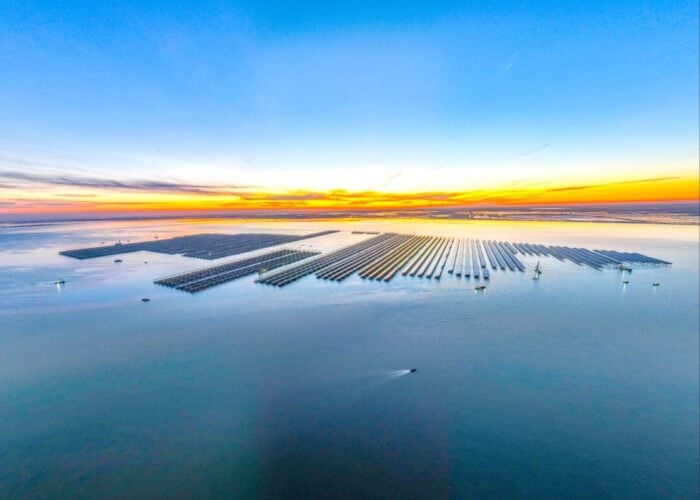
US floating solar developer Noria Energy has started construction on a 50kW floating PV (FPV) pilot project in Colorado, which includes the first trackers on a floating solar project in the US.
The Aurea Solar project is set for commissioning in September 2025 and will use Noria’s ‘AquaPhi’ tracking technology. This will allow the project’s solar islands to rotate to follow the path of the sun, increasing the system’s energy output by 10-20%, according to the company.
Try Premium for just $1
- Full premium access for the first month at only $1
- Converts to an annual rate after 30 days unless cancelled
- Cancel anytime during the trial period
Premium Benefits
- Expert industry analysis and interviews
- Digital access to PV Tech Power journal
- Exclusive event discounts
Or get the full Premium subscription right away
Or continue reading this article for free
Noria also noted that the technology can be retrofitted to existing floating solar projects, raising the prospect of other floating PV plants integrating tracker technology.
“We are excited to embark on the prospects of floating solar as a means to not only produce and conserve energy, but also to improve our water supply by reducing how much is lost to evaporation,” said Jarod Roberts, chief of water resources at the Consolidated Mutual Water Company (CMWC), which owns the Fairmount Reservoir where the project is being built.
A study published last year by Taylor & Francis reported that the deployment of FPV could reduce evaporation of water, caused by heating by the sun, by up to 49.7%. At the Fairmount Reservoir, power from the Aurea project will be used to power onsite pumps used to regulate the reservoir’s water supply.
The news follows a number of project developments in the US FPV space, including Third Pillar Solar’s announcement of plans to build 500MW of floating solar capacity in Texas, and D3Energy’s start of construction at a 6MW FPV project in Ohio.






